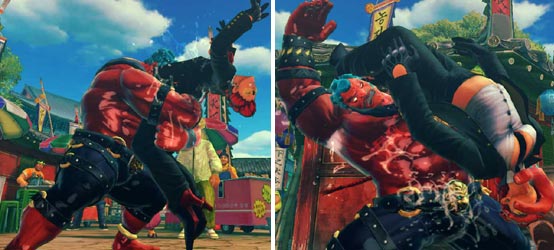
A previous blog had highlighted the Capoeira Fighter series by Spiritonin. The game was a love letter to the genre and presented within it many influences pulled from Street Fighter and Tekken. The game had actually been shaping the development of one of the main characters into a villain over the course of three titles. The Capoeira Fighter series originally did not feature a boss character and only the most basic of plots. By the third game each of the characters had a clearly defined goal from beginning to end. Players were allowed to choose from one of two outcomes. Not that players necessarily chose between a good or evil path, most paths actually had indifferent resolutions. However each variation hinted that either outcome was acceptable in canon. Moreover each path ran parallel with the rest of the cast so that all of the encounters in the game were possible.
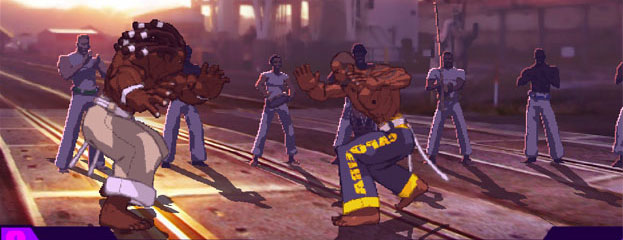
Mestre Zumbi could be considered the most identifiable character in the game but he seemed to be a thorn in the side of the heroes. Imagine a fighting game that used the images of a villain as a selling point. It was rarely done by developers. The large muscular black man wore white pants and had thick braided hair. The contrast of dark and light elements on his costume helped him stand out from the cast. His massive frame and powerful moves let players know that this character was not one to be messed with. It turned out that the other masters in the game, Loka and Rochedo had a number of confrontations with Zumbi over the course of the series. The two masters were very consciences of their students and wanted them to learn the most positive aspects of Capoeira. Zumbi by contrast was jealous of the other Mestres and wanted to prove that he was simply the best fighter. He was willing to beat up all of the students and masters along the way to make his point. This made Zumbi very unpredictable and dangerous through the series. Loka and Rochedo accompanied their students where they could or sent elder students to keep an eye on the young ones whenever they traveled.
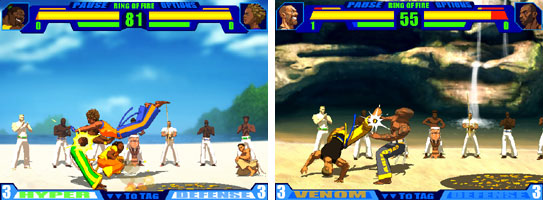
Zumbi was actually a well known name in Brazil. In the 17th century Zumbi dos Palmares had been born in the Quilombos, a settlement established by escaped slaves, prisoners, natives and refugees. There were a few settlements hidden on the east coast of Brazil just outside the jurisdiction of the Portuguese. Freedom fighters would try to help other slaves escape or stage insurrections from the Quilombos. Zumbi was an excellent fighter and a descendant of the Imbangala warriors of Angola. He became famous for his bravery as well as his military strategy. When his uncle Ganga Zumba was killed in battle he assumed the leadership of the warriors from the Palmares. A good number of their ranks were made up of exceptional capoeiristas, these fighters had proven the worth of the old African customs and helped spread the form through the Quilombos.
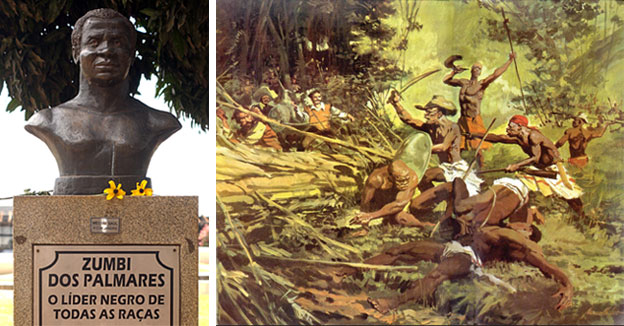
When the Portuguese raided his settlements they never managed to capture him. Slaves believed that he was blessed by the spirits, an immortal. Zumbi developed a sort of hero worship which was beginning to spread and became a concern to plantation owners and local governments. Eventually he was betrayed by a prisoner and his location was given to the authorities. As soon as they captured him they beheaded Zumbi and put the head on display in Recife, one of the largest cities in Brazil. The government hoped to break the will of the slaves. Afro-Brazilian pride did not die then and never would. The day that Zumbi dos Palmares was killed, November 20, would become celebrated as black awareness day in Brazil. The fact that Spiritonin gave the villain in their series the name of a hero was meant to be ironic. The characters in the game wondered to each other why the noble name was assumed by a madman.
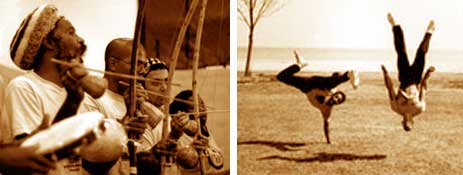
The dangerous obsessions of Zumbi were revealed little by little over the course of Capoeira Fighter 3. Loka and Rochedo warned their students to watch out for him. There were rumors going around that Zumbi was beginning to practice some dangerous things. These were not solely forbidden fighting forms but also supernatural elements, perhaps the fictional Zumbi was trying to find out how to become "immortal" himself? Rochedo warned his student and confidant Saturno that Zumbi was "messing with things he doesn't understand." Not everyone in the game actually crossed paths with Zumbi. Scott Stoddard, designer of the series, made the plot believable in the sense that Zumbi would have only crossed paths with those he had previous dealings with. The heroic characters that were trying to stop the man would have fought him in his ultimate boss form. Otherwise characters that did fight him only saw him in his "regular" form. Many did not see him on the way to their own resolution.
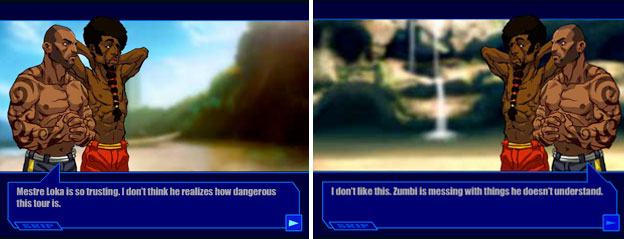
Even his allies were becoming leery of Zumbi. Cobra, the daughter of crime lord Arcenio Rodrigues was obsessed with power, but not the same form of power that Zumbi was seeking out. She was partnered with him early in the game. When Zumbi revealed to Cobra the forces he had aligned himself then the players were given the choice to leave him for his understudy, the ponytail sporting and almost equally massive fighter named Maestro. Zumbi had ignored the traditions of capoeira and gave Maestro a nickname without having him go through a Batizado and earn if from the community. Maestro had originally appeared in Capoeira Fighter 2 under the alias Primo. He also had ties to the criminal underworld. Primo / Maestro was actually a parody of the villain Silverio from the film "Only the Strong." Maestro and Cobra seemed a perfect pairing and allowed Zumbi to fulfill his destiny within the game as a solitary figure.
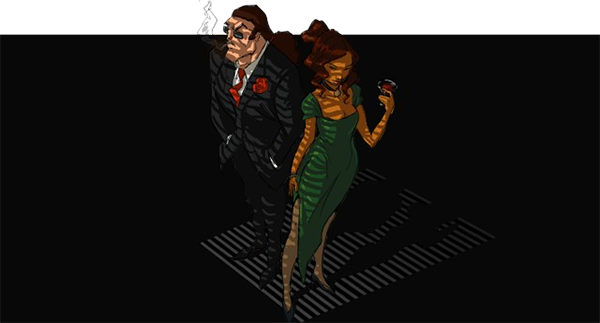
Villains in fighting games rarely had partners. They were usually so powerful that they could take on one, two or even three fighters all by themselves. If anything they had minions, other dangerous men and women that would obey their orders. These people acted as sub-bosses. In Street Fighter II the Dictator had Sagat, the ex-pro boxer M. Bison and the Spanish assassin Balrog working for him. His "Generals" would keep the other World Warriors at bay. Only those powerful enough to go through his men deserved a chance to fight him as well. Of course Gouki broke all the rules and destroyed the Dictator at first sight, cementing his reputation in the universe. Capoeira Fighter 3 did not have the luxury of going through countless revisions so that players could be eased into the canon and history of Zumbi. Instead the entire transformation of Zumbi was done within game, and masterfully at that.
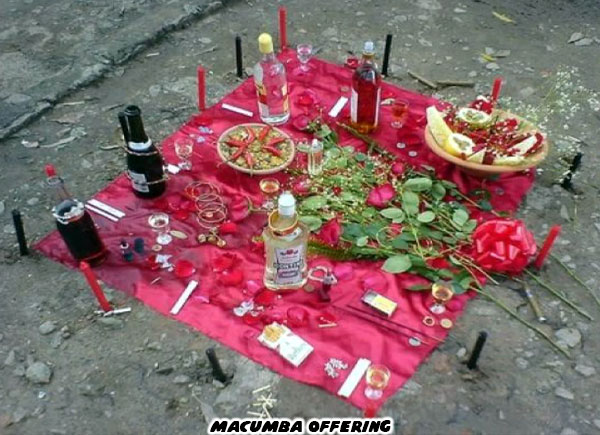
Cobra had told Zumbi that his rival Loka was taking his students on a world tour. When Zumbi learned of this it spurned him to chase after his sworn enemy. He was eager to show off the things he had learned. Cobra wondered aloud if the rumors were true, was Zumbi messing with Macumba? These were the ancient spiritual beliefs brought over from West Africa during the slave trade. Macumba was a sort of catch-all phrase for the Brazilians to describe magic. It was a force that could alter the fates or levy powerful curses on people. In his quest for absolute power Zumbi had submitted himself to the mysterious forces. The folly was whether or not he could hope to control such power or be bound in service to it. The next blog will explore the creation of this new villain. As always if you enjoyed this blog and would like to sponsor me please visit my Patreon page and consider donating each month, even as little as $1 would help make better blogs and even podcasts!

No comments:
Post a Comment